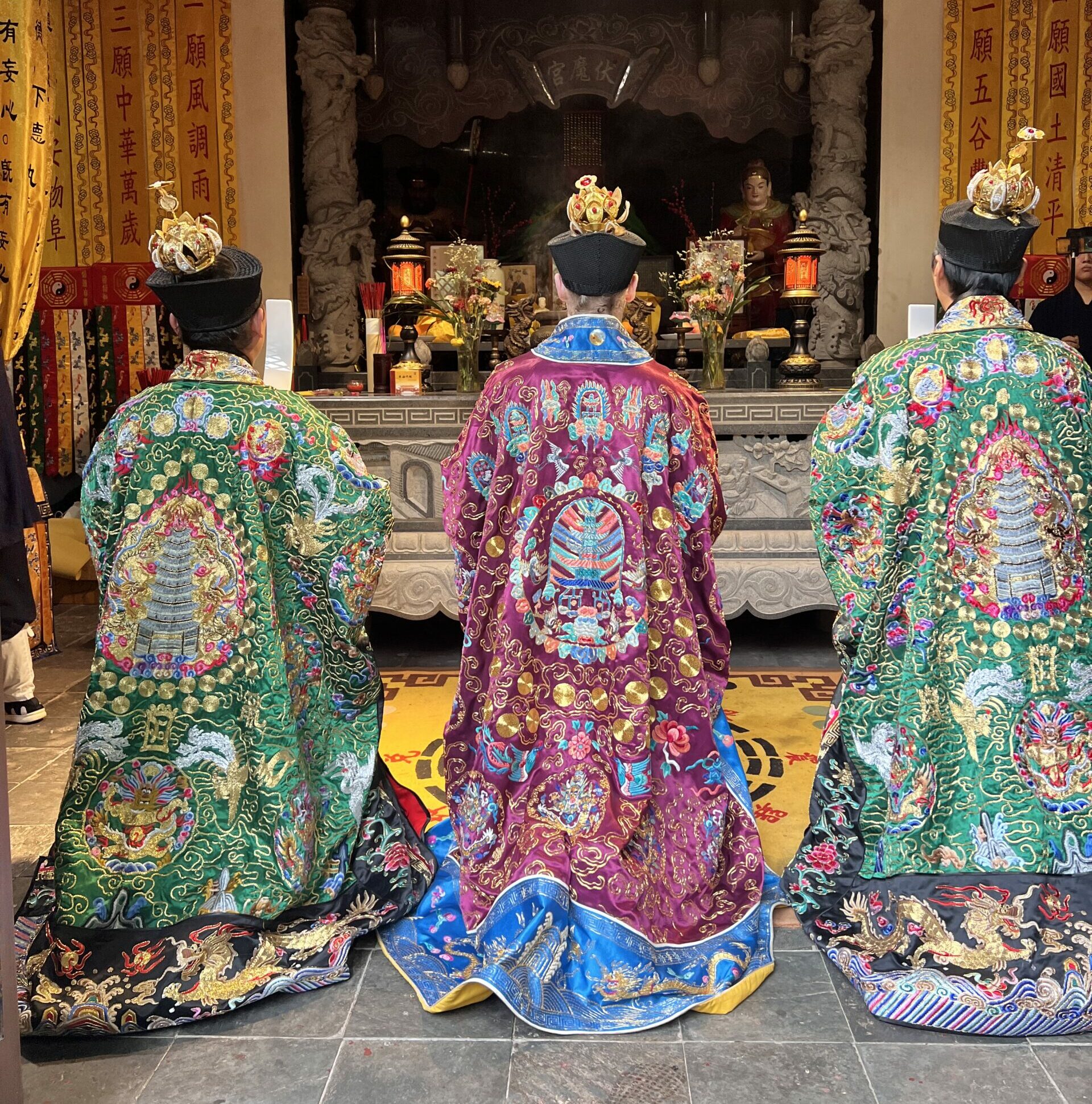Daoist ceremonies hold a profound place within the rich tapestry of Daoist philosophy and practice. Rooted in ancient Chinese traditions, these ceremonies encompass a wide range of rituals and observances that reflect the core principles and beliefs of Daoism. This essay delves into the history of Daoist ceremonies, exploring their origins, evolution, and enduring significance.
Ancient Origins
Daoist ceremonies trace their origins back to the early stages of Chinese civilization. Daoism itself emerged from the Daoist philosophy laid out in classic texts such as the Dao De Jing and Zhuangzi. The concept of harmony with nature and the cultivation of inner virtues formed the bedrock of these ceremonies.
Early Daoist Rituals
In their early stages, Daoist rituals were deeply influenced by ancient Chinese folk practices, shamanism, and the veneration of natural forces. These rituals sought to establish a connection between humans and the spiritual realm, fostering a harmonious relationship between the physical and metaphysical worlds. Rituals often involved offerings, incantations, music, and dance, aimed at honoring deities, ancestors, and celestial beings.
Development of Daoist Ceremonial Traditions
During the Han Dynasty (206 BCE – 220 CE), Daoist ceremonies experienced significant development. The rise of organized Daoist sects, such as the Zhengyi (Orthodox Unity) and Quanzhen (Complete Perfection), marked a turning point in the formalization and systematization of Daoist rituals. The influence of the imperial court also contributed to the refinement and standardization of ceremonies.
Ritual Instruments and Tools
Daoist ceremonies employ a variety of instruments and tools, each carrying symbolic meaning and significance. These include items such as censers, ritual swords, bells, drums, and various talismans. These objects serve as conduits for channeling energy, purifying spaces, and invoking divine presence during rituals.

Daoist Key-Ceremonies
Daoist ceremonies encompass a wide range of practices and rituals, each serving specific purposes and invoking different deities or celestial forces. Some prominent ceremonies include:
- Ancestor Worship: Honoring and paying respects to one’s ancestors, fostering ancestral connections and seeking their blessings.
- Celestial Blessings: Invoking celestial forces, such as the gods of heaven, earth, and various stars, to seek guidance, protection, and harmony with the cosmos.
- Purification Rituals: Cleansing physical and spiritual impurities through various rituals, such as the Burning Incense Ritual or the Water Purification Ceremony.
- Life Milestone Ceremonies: Celebrating important life events such as weddings, birthdays, and funerals with ceremonies that invoke blessings, ensure good fortune, and aid in spiritual transitions.

Evolution and Contemporary Significance
Daoist ceremonies have evolved over the centuries, adapting to changing social, cultural, and religious landscapes. In modern times, these ceremonies continue to hold relevance, serving as a means to seek balance, cultivate inner virtues, and connect with the transcendent realm.
Furthermore, Daoist ceremonies have gained international recognition and are appreciated for their aesthetic beauty, philosophical depth, and contributions to holistic well-being. Practices like Tai Chi, Qi Gong, and meditation, which are rooted in Daoist principles, have found widespread popularity for their physical and mental health benefits.
Daoist ceremonies embody the essence of Daoist philosophy and reflect the Chinese people’s enduring connection with their ancestral roots and spiritual heritage. The rich history, symbolism, and practices of these ceremonies offer a gateway to exploring the profound wisdom and harmony that Daoism offers. Whether in ancient times or the modern era, Daoist ceremonies continue to inspire individuals to seek harmony within themselves, with others, and with the world around them, fostering a deep sense of connection and reverence for the Dao.
Written and Translated by Daoist Liu Cheng Yong, German Daoist Association.


Thank you so much for this wonderful and bright essay!